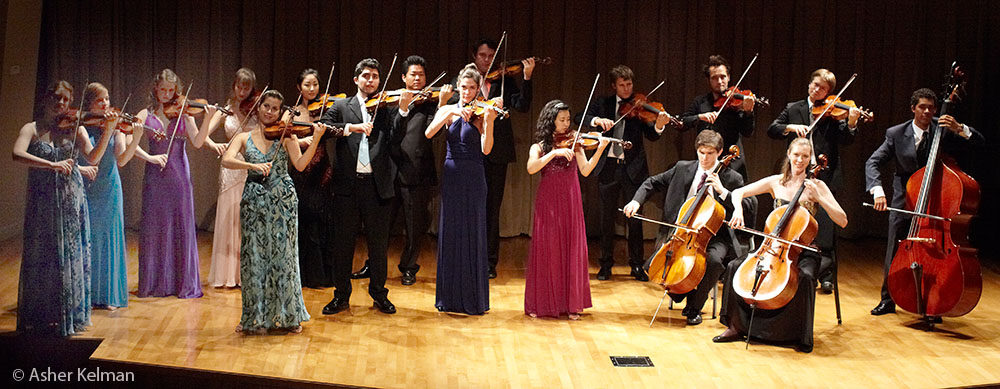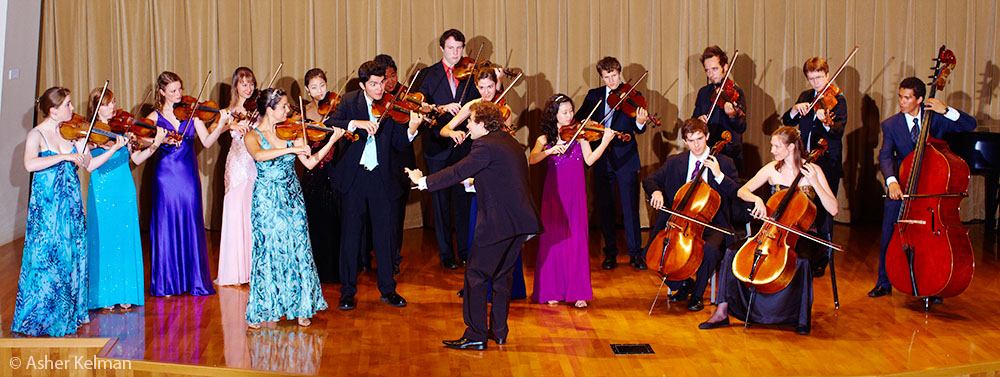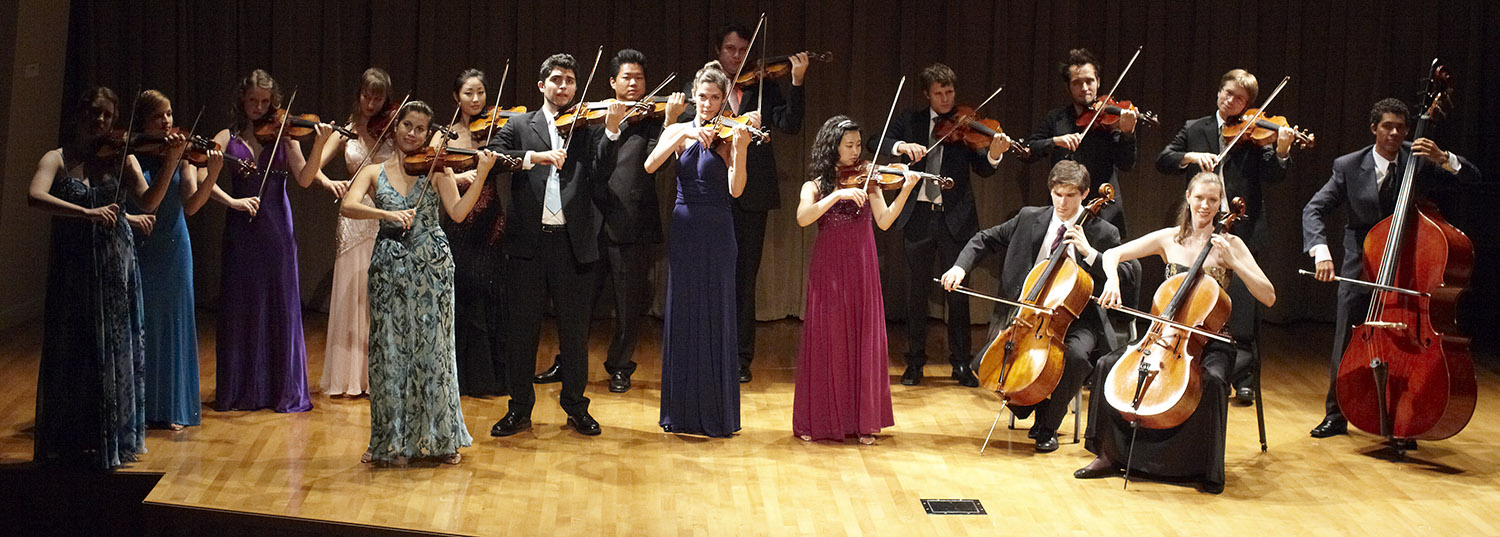Asher Kelman
OPF Owner/Editor-in-Chief
Here's an example of overhead tungsten stage light with a chamber music group, A Colburn conservatory Chamber Orchestra group just returned from Sofia, Bulgaria, where they played to enthusiastic audiences.
To the right of the stage center was a valuable, but stranded Steinway grand piano that requires technicians to move it out of the way. So we were forced to get to the left of that! Since the light is maximum in the center of the stage, it ended up really dark on the left! Here I corrected that as best I could in CS4, (after processing the image in Capture One from the RAW file). No color correction applied beyond using a shirt as a source of white.

Asher Kelman: Colburn Conservatory Chamber Music Group Celebratory Return From Sofia Bulgaria
Tungsten Light From Overhead. Notice left side drastically recovered from dark shadows
The second picture show the effect of overwhelming the stage lights with flash, albeit day light temp, not matching the tungsten stage lights.

Asher Kelman: Colburn Conservatory Chamber Music Group Celebratory Return From Sofia Bulgaria
600 Watt.Seconds Lighting, Lumedyne, temp ~5500 degree K. in addition to tungsten stage lighting.
Well, one can see that the issue of uneven exposure can be overcome with the flash. That's satisfying in itself. However, the strong shadows would need to be addressed by lighting behind the musicians too.If that was the only issue here, i'd be most happy. If one compares the two images one can see that the colors of the dresses are very different.
If the light is consistent, one would accept that, yes that's a heavy does of purple on the left, but ,hey, that's the choice the designer made! With both pictures on the same page, it's obvious that the color balance is off in one or both of the pictures. however, color was not the issue here, just the luminance gradient that needed correcting.
I simply need to photograph a set of Gretag Macbeth digital color charts at intervals across the stage and make a series of images processed these shots of the color card giving a new profile for each region of the stage. Of course, it would be easier to have the stage lit well in the first place. It seems that there's a long tradition, at least in LA, of odd lighting in music concerts. On a theatrical stage, they would never get away with it! Still, what's impressive is that as the musicians perform, the experience of the music removes the attention from lighting to listening. I'm sure that the audience has no clue that each side of of the orchestra is essentially in the dark as far as the camera is concerned.
So from here on, I may be gelling the lights and for sure i'd like a color meter!
Asher
To the right of the stage center was a valuable, but stranded Steinway grand piano that requires technicians to move it out of the way. So we were forced to get to the left of that! Since the light is maximum in the center of the stage, it ended up really dark on the left! Here I corrected that as best I could in CS4, (after processing the image in Capture One from the RAW file). No color correction applied beyond using a shirt as a source of white.

Asher Kelman: Colburn Conservatory Chamber Music Group Celebratory Return From Sofia Bulgaria
Tungsten Light From Overhead. Notice left side drastically recovered from dark shadows
The second picture show the effect of overwhelming the stage lights with flash, albeit day light temp, not matching the tungsten stage lights.

Asher Kelman: Colburn Conservatory Chamber Music Group Celebratory Return From Sofia Bulgaria
600 Watt.Seconds Lighting, Lumedyne, temp ~5500 degree K. in addition to tungsten stage lighting.
Well, one can see that the issue of uneven exposure can be overcome with the flash. That's satisfying in itself. However, the strong shadows would need to be addressed by lighting behind the musicians too.If that was the only issue here, i'd be most happy. If one compares the two images one can see that the colors of the dresses are very different.
If the light is consistent, one would accept that, yes that's a heavy does of purple on the left, but ,hey, that's the choice the designer made! With both pictures on the same page, it's obvious that the color balance is off in one or both of the pictures. however, color was not the issue here, just the luminance gradient that needed correcting.
I simply need to photograph a set of Gretag Macbeth digital color charts at intervals across the stage and make a series of images processed these shots of the color card giving a new profile for each region of the stage. Of course, it would be easier to have the stage lit well in the first place. It seems that there's a long tradition, at least in LA, of odd lighting in music concerts. On a theatrical stage, they would never get away with it! Still, what's impressive is that as the musicians perform, the experience of the music removes the attention from lighting to listening. I'm sure that the audience has no clue that each side of of the orchestra is essentially in the dark as far as the camera is concerned.
So from here on, I may be gelling the lights and for sure i'd like a color meter!
Asher

